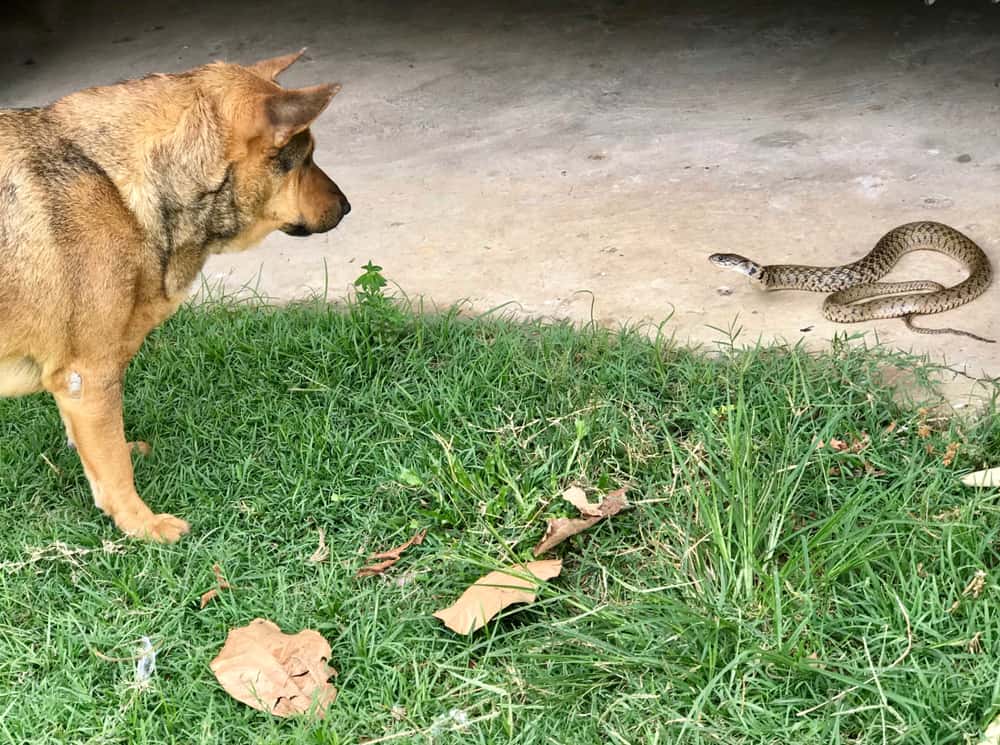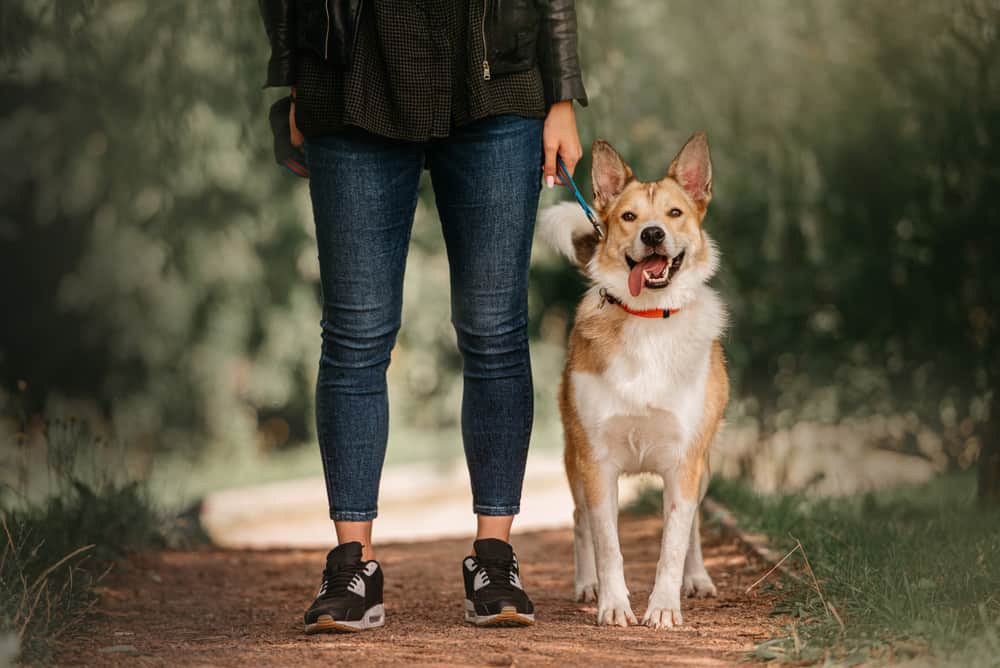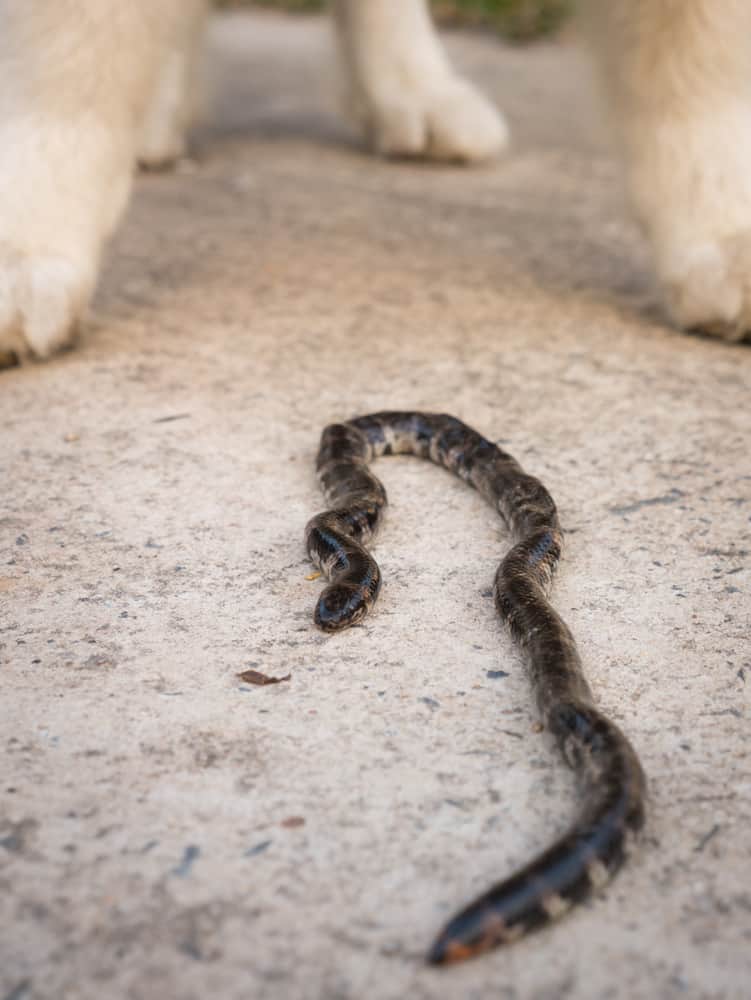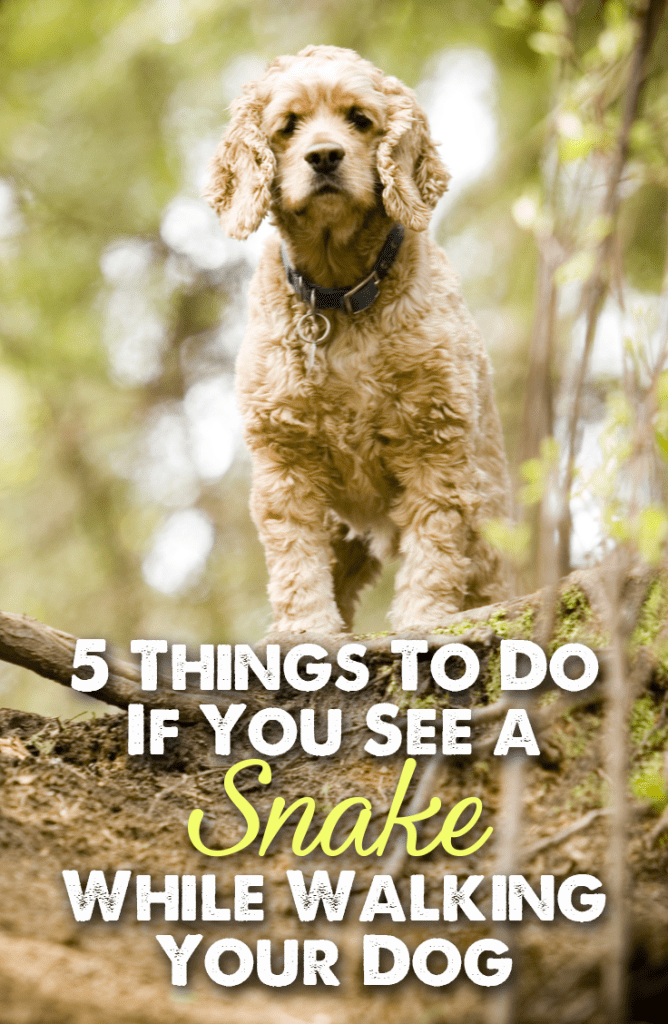“This post contains affiliate links, and I will be compensated if you make a purchase after clicking on my links.”
Many people feel a primal and inexplicable fear of snakes of all sorts, and the idea of encountering one while on a walk with their beloved dog is enough to make them never want to leave the house again.

However, in North America, the majority of snakes you are likely to encounter might look scary, but are mostly harmless.
There are only four species of venomous snakes in the United States, which between them range the southeastern, southwestern, middle Atlantic, and mountain states.
Any snake, however, can strike out and bite a dog that is agitating it, and any animal bite can be dangerous if left untreated for too long.
Knowing what to do when you and your dog encounter a snake, then, is key for keeping your dog safe and avoiding what are usually preventable injuries. While it can be hard to remember what to do in the moment of crisis, there are a few simple steps everyone should keep in mind to help keep their dogs happy, healthy, and venom-free.
1. Remain calm. This is, of course, easier said than done, but it is also the most important step to help your dog avoid a dangerous snake bite and also to help them reach treatment quickly if they do get bitten. Taking a few deep breaths and staying in control of yourself in this situation, as hard as it is, will ensure that you are thinking as clearly as you can and making the best decisions for you and your dog. Crucially, it will also signal to your dog that everything is ok and they do not need to panic. A panicked or agitated dog is much more likely to antagonize a snake into attacking, for one thing, and if they do sustain a bite, that rapid heart rate will only make it easier for the venom to spread throughout their bodies and do more damage.
2. Keep your dog tightly leashed. If you are walking your dog in an area that is known to have a lot of snakes or where there is any chance of encountering a venomous snake, it is best to keep your dog on a fairly tight leash throughout the walk. This does not mean your dog should not be allowed to explore or sniff around, but you should prevent them from sticking their face headlong into tall grass, dense bushes, shady crevices in rocks, or anywhere where a snake might be hiding. This will help prevent encounters and bites in the first place, but it will also make it easier for you to help your dog if they do get bitten; you can be sure they will stay close by and be easy for you to carry out and take to help, rather than having them panic and run away into the woods.

3. Remove yourselves from the situation as quickly as possible. If the snake is just lying on the edge of the trail, you might be able to skirt carefully around it, keeping your dog on a tight leash right by your side. If there is not space to go around, you know or suspect the snake is venomous, or the snake seems alert or defensive, turn around. Walking away may ruin your chance to get to the perfect vista or find the cool cave you were looking for, but a snake bite would ruin your day much more than a re-imagined walk will. Remember, though, to remain calm even as you leave, walking, or ideally backing up, at a normal or slower than normal pace, rather than turning and running. A snake can strike faster than you can run, so moving slowly is your best bet to avoid triggering its defensive instincts and precipitating a bite.

4. Try to make a mental note of the snake’s features. This is tricky, but knowing what kind of snake bit your dog, if they do bite, will be helpful for your vet in determining treatment for the bite. Knowing what kind of snakes live in the area will make this much easier, as you will have a better idea of what to look for to see if a snake is a dangerous coral snake versus a harmless king snake. In general, venomous North American snakes can be distinguished by their triangular heads and fat bodies, but knowing what kind of snakes you might be looking at will make it much easier to deduce what kind of snake you are looking at. Do not panic, though, if you have no idea what kind of snake it is or you did not actually see your dog get bit. If it is a venomous bite, your vet will be able to tell what kind of venom it was fairly soon based on your dog’s symptoms and will be able to treat them accordingly, without much delay.
5. Leave treatment of any bites, especially venomous ones, to your vet. Pretty much every commonly recommended treatment for a venomous snake bite is useless, if not outright dangerous. Do not attempt to suck the venom out of the wound; do not try to tourniquet the bitten limb to prevent the venom from spreading. If you can, elevate your dog’s chest and heart above the wound, but the number one most important thing is getting your dog to the vet as quickly as possible. In North America, even venomous bites are unlikely to be fatal to your dog if they receive rapid treatment. If you know or suspect that the bite is not venomous, you can wash it out yourself with water or saline solution, but you should still get in touch with your vet, as even non-venomous snake bites can lead to infections or other complications.
Encounters between dogs and snakes are probably inevitable, and if you live in a region with a large population of venomous snakes, like the American southeast or the western mountain states, it is likely that you and your dog will encounter a venomous snake at some point.
The important thing to remember, though, is that, in the modern age, even venomous snake bites are highly treatable, if treated quickly. And, they are also easily avoidable with a few simple precautions and some common sense.
Armed with the knowledge of what to do, there is no reason you and your dog should not enjoy walking together wherever the road may take you.
Found this article helpful? Pin it!
























